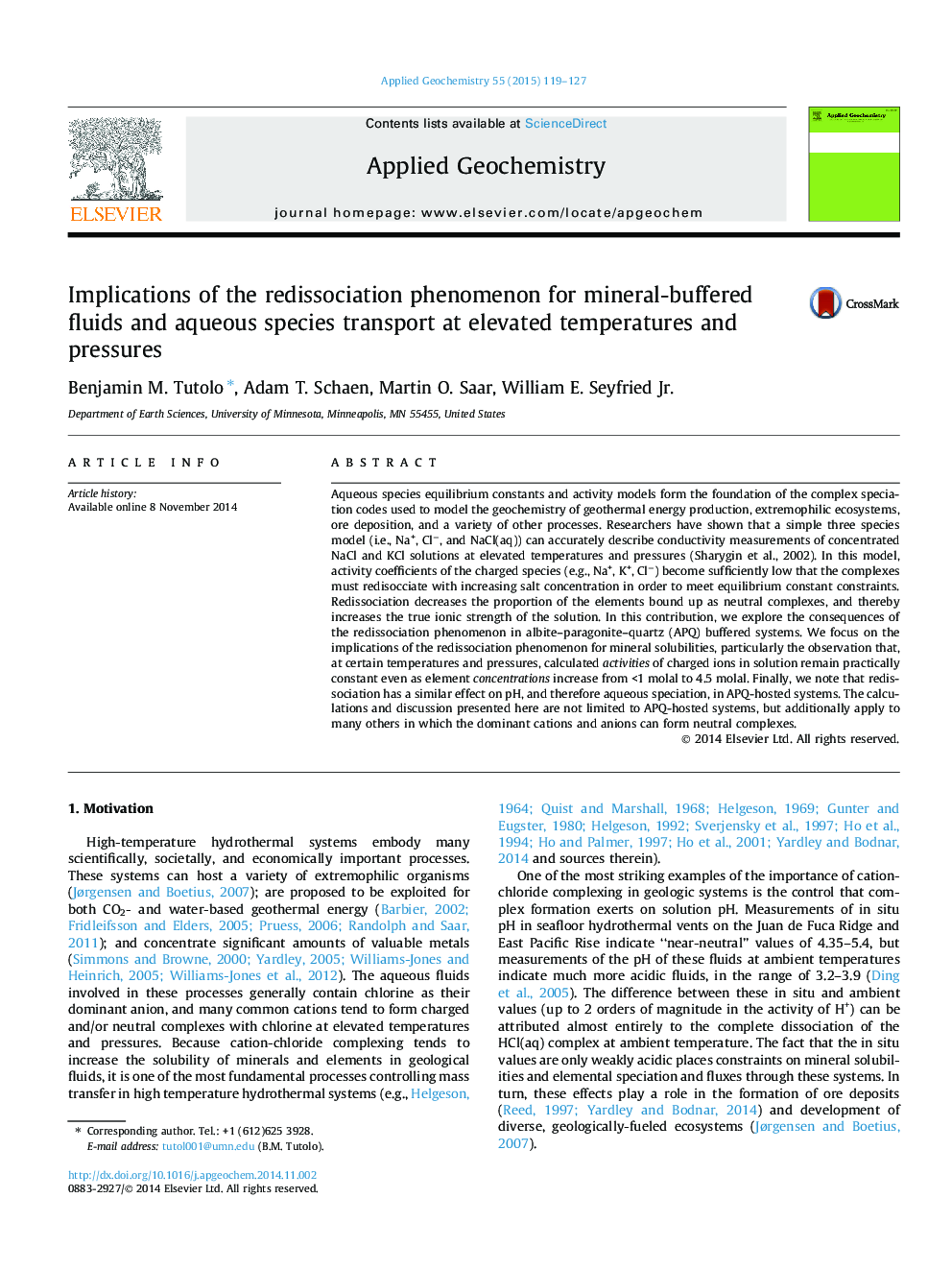| کد مقاله | کد نشریه | سال انتشار | مقاله انگلیسی | نسخه تمام متن |
|---|---|---|---|---|
| 6335202 | 1620236 | 2015 | 9 صفحه PDF | دانلود رایگان |
عنوان انگلیسی مقاله ISI
Implications of the redissociation phenomenon for mineral-buffered fluids and aqueous species transport at elevated temperatures and pressures
ترجمه فارسی عنوان
اثرات پدیده دوباره سازگاری برای مایع بافر معدنی و انتقال آب در دمای بالا و فشار
دانلود مقاله + سفارش ترجمه
دانلود مقاله ISI انگلیسی
رایگان برای ایرانیان
موضوعات مرتبط
مهندسی و علوم پایه
علوم زمین و سیارات
ژئوشیمی و پترولوژی
چکیده انگلیسی
Aqueous species equilibrium constants and activity models form the foundation of the complex speciation codes used to model the geochemistry of geothermal energy production, extremophilic ecosystems, ore deposition, and a variety of other processes. Researchers have shown that a simple three species model (i.e., Na+, Clâ, and NaCl(aq)) can accurately describe conductivity measurements of concentrated NaCl and KCl solutions at elevated temperatures and pressures (Sharygin et al., 2002). In this model, activity coefficients of the charged species (e.g., Na+, K+, Clâ) become sufficiently low that the complexes must redisocciate with increasing salt concentration in order to meet equilibrium constant constraints. Redissociation decreases the proportion of the elements bound up as neutral complexes, and thereby increases the true ionic strength of the solution. In this contribution, we explore the consequences of the redissociation phenomenon in albite-paragonite-quartz (APQ) buffered systems. We focus on the implications of the redissociation phenomenon for mineral solubilities, particularly the observation that, at certain temperatures and pressures, calculated activities of charged ions in solution remain practically constant even as element concentrations increase from <1Â molal to 4.5Â molal. Finally, we note that redissociation has a similar effect on pH, and therefore aqueous speciation, in APQ-hosted systems. The calculations and discussion presented here are not limited to APQ-hosted systems, but additionally apply to many others in which the dominant cations and anions can form neutral complexes.
ناشر
Database: Elsevier - ScienceDirect (ساینس دایرکت)
Journal: Applied Geochemistry - Volume 55, April 2015, Pages 119-127
Journal: Applied Geochemistry - Volume 55, April 2015, Pages 119-127
نویسندگان
Benjamin M. Tutolo, Adam T. Schaen, Martin O. Saar, William E. Jr.,
